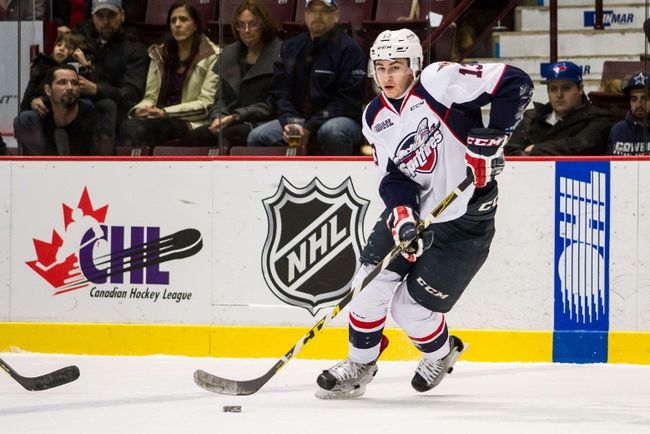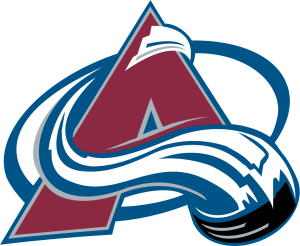 1. C Nolan Patrick (Brandon, WHL | 6’2, 198):
1. C Nolan Patrick (Brandon, WHL | 6’2, 198): A handful of injuries may have slowed down the hype train that began over two years ago, but this physical center remains the class of a relatively thin draft crop. When healthy, Patrick — a player similar to Anaheim’s Ryan Getzlaf — was one of the WHL’s top point producers despite carrying a Brandon squad beset by graduations. Turning around the mess in Colorado is going to take a lot more than one top draft pick, but drafting Patrick is an excellent start.
 2. C/W Casey Mittelstadt (Green Bay, USHL | 6’1, 201):
2. C/W Casey Mittelstadt (Green Bay, USHL | 6’1, 201): Couple a second-half surge fueled by youngsters with an already deep pool of prospects, and the likelihood of Arizona trading down for proven players becomes all the more discernible. But I don’t see the Yotes passing up the chance to draft a phenomenal offensive player like Mittelstadt, a strong-skating playmaker with a deadly shot who can also play the wing. The future Minnesota Golden Gopher and winner of Minnesota’s 2017 Mr. Hockey Award dominated the USHL with an outstanding senior season with Eden Prairie in between.
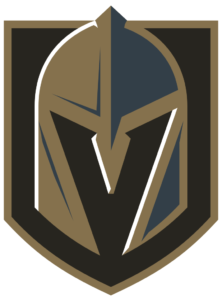 3. Nico Hischier (Halifax, QMJHL | 6’1, 176):
3. Nico Hischier (Halifax, QMJHL | 6’1, 176): If Las Vegas wants its hockey team to mirror the city’s glitzy reputation, then drafting this skilled Swiss pivot with an exceptional hockey brain is a step in the right direction. Hischier finished the regular seasons as the top scoring rookie in Canadian Major Junior and possesses a complete skill set. He cooled off down the stretch after a torrid start, but his pre-draft resume includes star performances at numerous high-profile events, including the under-20 world junior championship and the CHL Top Prospects Game.
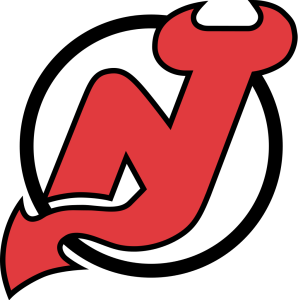 4. RW Owen Tippett (Mississauga, OHL | 6’0, 200):
4. RW Owen Tippett (Mississauga, OHL | 6’0, 200): Rugged goal scorer with a lethal shot who produced one of the best wire-to-wire seasons of any 2017 draft prospect. The Devils might be starving for offense at the NHL level, but GM Ray Shero has quietly collected a strong group of skilled prospects, including 2016 lottery pick Mike McLeod, who happens to center Tippett on the Steelheads’ top line. It’s not a stretch to say the Devils have seen plenty of Tippett, a power forward who can skate as well as he can fill the net, which he did to a tune of a team-best 44 goals, 76 points and 284 shots.
 5. LW Eeli Tolvanen (Sioux City, USHL | 5’10, 170):
5. LW Eeli Tolvanen (Sioux City, USHL | 5’10, 170): Dinging an elite talent for a nondescript performance at an event like the WJC rather than looking at the overall body of work is something I simply won’t do, so I’d like to thank Tolvanen for silencing the critics with an exceptional second half. A pure goal scorer with a blistering shot and quick release, the Finnish import leads the USHL in even-strength goals (24) and shots (230 in 48 games). His ability to elude opponents and finish off the rush is unmatched by any draft peer, and the trend of shrinking NHL defensemen will only make it easier for him to exploit his dynamic offensive skills. Tolvanen is committed to Boston College.
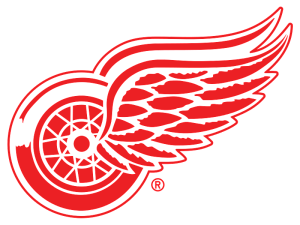 6. C/W Elias Pettersson (Timra, Allsvenskan | 6’2, 161):
6. C/W Elias Pettersson (Timra, Allsvenskan | 6’2, 161): The Red Wings, of all teams, are leaking skill all over the place. And though they’re rebuilding in earnest, it’s going to take a few years for the Winged Wheel to even sniff the successes we came to expect from them. Nevertheless, enter Pettersson, a sublime two-way talent with jaw-dropping moves and a proclivity for making defenders look silly. Sure, he’s beyond wiry and could stand to spend more time with a fork in his hands, but every other block is checked. He can play either center or wing, and owning a ridiculously soft set of hands makes him a perfect fit for any power play. Pettersson is a dangler with an acute hold on how plays develop.
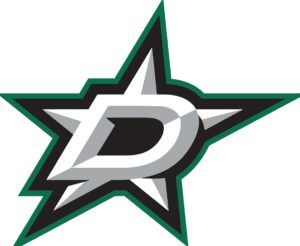 7. C/W Gabe Vilardi (Windsor, OHL | 6’3, 201):
7. C/W Gabe Vilardi (Windsor, OHL | 6’3, 201): I wouldn’t be the least bit surprised if the Stars nabbed a goalie here, but common sense likely prevails and they grab one of the draft’s top playmakers. Vilardi is a natural two-way center with size who spent most of the season on the wing, where he scored 29 goals on only 150 shots. Dallas has blue chip wingers in the pipeline, so Vilardi’s versatility, puck management and off-the-charts IQ make him an obvious choice. An early-season knee injury that knocked him out of the Hlinka no longer seems to be a concern, and his average speed is the only thing keeping him from being a serious candidate for first overall.
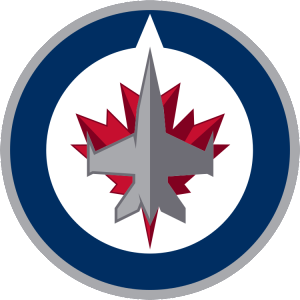 8. RHD Tim Liljegren (Rogle, SHL | 6’0, 191):
8. RHD Tim Liljegren (Rogle, SHL | 6’0, 191): Liljegren may not have had the best season of the handful of notable 2017-eligible blueliners, but the potential to become an NHL game breaker hasn’t gone anywhere. The Jets should have a field day in a draft heavy on goalies and reliable two-way defenders, and while the parent club is only a piece or two from being a playoff team again, you rarely get a chance to come away with a draft pick who can skate and rifle the puck the way Liljegren can. This isn’t a make-or-break draft for Winnipeg, and its amateur scouting department recently has done quite well for themselves. I say roll the dice and draft the kid who’s already played against men in a professional league.
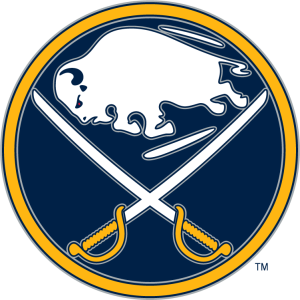 9. LHD Jusso Valimaki (Tri-City, WHL | 6’2, 204):
9. LHD Jusso Valimaki (Tri-City, WHL | 6’2, 204): Tim Murray is feeling the heat after his Sabres will miss the playoffs for the third time in three full seasons as GM, so moving the pick for a veteran or prospect further along the development path is something to consider. Valimaki, however, is the only draft-eligible defensemen who has the brain, the legs and the physical muturity to take the shortest route from Draft Day to Opening Night. He owns a very hard shot and is a go-to guy for a variety of scenarios, especially when matched against top lines during late-game situations.
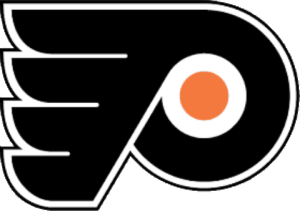 10. C Martin Necas (Brno, Extraliga | 6’1, 167):
10. C Martin Necas (Brno, Extraliga | 6’1, 167): The Flyers are another team with a boatload of prospects too young to save the franchise from perennial mediocrity. Yet on Draft Day ’17 they have the chance to nab Necas, a dynamic playmaking center with superior puck skills and a firm grasp on how the puck should be handled. He may even be the guy to become Claude Giroux’s eventual replacement. He was a top-six center for Brno’s senior team for most of the season and is the flower of the Czech Republic’s blossoming talent pool. Zone entries from Necas are clean and calculated, and you can count on him to run a power play with efficiency and common sense.
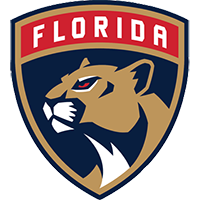 11. LHD Erik Brannstrom (HV71 J20, Superelit | 5’10, 173):
11. LHD Erik Brannstrom (HV71 J20, Superelit | 5’10, 173): Ice general and elite breakout orchestrator with legitimate top pairing potential. Brannstrom is a very good skater with a deceptive change of pace who skates with his head up and manages to find the open man without giving away his intentions. Lots of teenage defensemen play with poise, but turning pressure situations into scoring chances is reserved for a select group of which Brannstrom sits at the very top. Nonstandard size would be a concern…if it were 1995. It’s kids like Brannstrom who you want managing the puck and strike with lethality while adhering to responsibilities in all three zones. Think peak Brian Campbell in terms of skating and puck distribution.
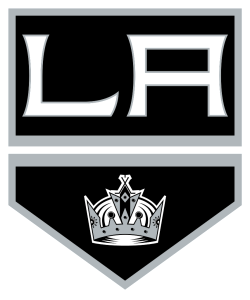 12. C Cody Glass (Portland, WHL | 6’2, 178):
12. C Cody Glass (Portland, WHL | 6’2, 178): The Kings missing the playoffs twice in the last three years will certainly sting, and heads should be expected to roll. But not all hope is lost, as the prospects they allowed to marinate in college or the minors are not only ready to play, but are able to produce as well. Glass is a terrific 200-foot pivot with strong hockey sense who centers Portland’s top line, finishing with a team-best 62 assists and 94 points. Things could go from bad to worse in Los Angeles, and Glass fits the mold of recent post-draft teenagers who made a quick jump to the NHL.
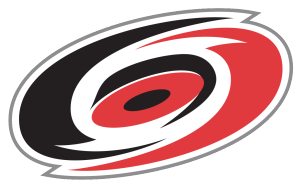 13. C Lias Andersson (HV71, SHL | 5’11, 198):
13. C Lias Andersson (HV71, SHL | 5’11, 198): The Canes have made solid moves at the draft table, and there isn’t one particular area where there is a glaring need. Andersson is a mature, two-way center who can occasionally fill in on the wing. He had a strong rookie season in the SHL, finishing with 19 points in 42 games for a talented HV71 club. Andersson has run the gauntlet of international competition with aplomb, placing among Sweden’s leaders in goals and points at the last WJC and U18 world championship. A shifty battler who is quick on his feet and a has knack for making something out of nothing, Andersson has a ton of upside considering how well he fared as a teenager on a good team in an adult league.
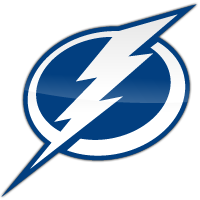 14. RHD Cale Makar (Brooks, AJHL | 5’11, 180):
14. RHD Cale Makar (Brooks, AJHL | 5’11, 180): The Bolts could use a little excitement from the back end, which is exactly why an electrifying dynamo like Makar makes sense. His dominance of a lesser league like the Alberta junior league was somewhat validated by his WJAC performance, but unless he plays for Canada at the men’s world championships in May, his pre-draft season leaves me wondering if his dizzying puck skills and explosive first step would be just as pronounced had he played in a tougher circuit. Then again, he should be a perfect fit for a team loaded with proven offensive talent.
 15. LHD Urho Vaakanainen (JyP, Liiga | 6’0, 185):
15. LHD Urho Vaakanainen (JyP, Liiga | 6’0, 185): Garth Snow could use some consistency in any form, so drafting this smooth-skating Finn not only adds a little balance to his prospect depth, but allows Vaakanainen to grow alongside a host of gifted forwards within a system that promotes offense from the back end. He’s been a bottom-pairing defender for most of the season, but his upside puts him on a top pairing. He’s a crisp, accurate passer and boasts a hard, accurate shot.
 16. RW Kailer Yamamoto (Spokane, WHL | 5’8, 153):
16. RW Kailer Yamamoto (Spokane, WHL | 5’8, 153): The Bruins have plenty of prospects with meat on their bones and all the intangibles to become regulars at the NHL level. But none have the sublime vision or playmaking abilities a puck magician like Yamamoto possesses. An undersized yet scrappy winger, the native Washingtonian led all CHL first-year eligibles in scoring with 99 points in 65 games. He’s performed well for Team USA at several international events and dazzled onlookers with his performance at the CHL Top Prospects Game.
 17. LHD Miro Heiskanen (HIFK, Liiga | 6’0, 170):
17. LHD Miro Heiskanen (HIFK, Liiga | 6’0, 170): Going from the poor house to the playoffs happened a lot quicker than anybody thought, and as exciting a season as this has been, the Leafs’ blueliners still struggle with puck management and coverage. The cupboard is stocked with skill and finesse up front, and while they could go for a big winger, it makes far more sense to gun for a polished two-way type like Heiskanen, who is a top-four mainstay on a solid HIFK team. Heiskanen is a very good outlet passer and plays with poise, but his impeccable positioning, especially on the penalty kill, makes me think he’ll be in the NHL before he turns 20.
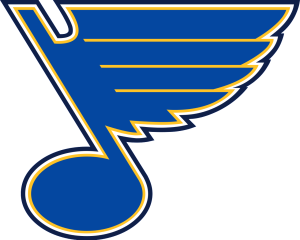 18. RW Klim Kostin (Dynamo Moscow, KHL | 6’3, 196):
18. RW Klim Kostin (Dynamo Moscow, KHL | 6’3, 196): A shoulder injury limited this power winger to only half a season, and it’s the only reason he doesn’t get picked in the top five. Violence and aggression are two words that immediately come to mind when watching Kostin treat every shift as if it was his last. But he’s not just a bulldozer on skates — his hands are extremely soft and he is far more creative than most draft prospects of his ilk. Kostin is a very good skater and knows what to do with the puck around the net, but it will be a while before we see this kid in action.
 19. RW Kristian Vesalainen (Frolunda J20, Superelit | 6’3, 207):
19. RW Kristian Vesalainen (Frolunda J20, Superelit | 6’3, 207): Add Vesalainen to the list of preseason favorites who either dealt with injuries or struggled producing in a senior league. In his case, it was the latter, as an early ride on Frolunda’s top line quickly turned into a stint in a Finnish junior league before closing his season out in the Superelit. The bouncing around was compounded by a sluggish WJC, but to Vesalainen’s credit, he bounced back in the playoffs with a string of dominating performances. He’s a goal scorer with size, strength and very good vision, but like most power forwards, Vesalainen goes through periods of inconsistency. But pairing him with a pass-first playmaker likely bears the results you expect from a player with his skills and an NHL-ready build.
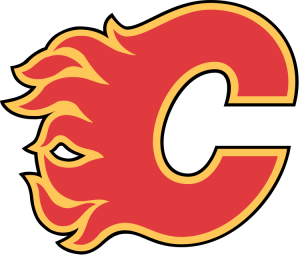 20. C Michael Rasmussen (Tri-City, WHL | 6’6, 215):
20. C Michael Rasmussen (Tri-City, WHL | 6’6, 215): The Flames made a lot of smart moves, so why not continue the trend by grabbing one of the draft’s top two-way centers who exploded into one of the WHL’s top goal scorers. Rasmussen isn’t flashy nor a speed burner, but he’s a smart player with or without the puck and an absolute nightmare to defend off the cycle. Need a guy to take a key draw or matchup up against a top forward? Rasmussen’s the one to do it. And while a wrist injury keeps him out of both the WHL playoffs and the U18’s, it shouldn’t prevent him from becoming a quality NHL center.
 21. LW Maxime Comtois (Victoriaville, QMJHL, 6’2, 200):
21. LW Maxime Comtois (Victoriaville, QMJHL, 6’2, 200): Ottawa is in desperate need of wingers below the NHL level after trading top goal-scoring prospect Jonathan Dahlen, and this is the part of this draft’s first round where even an inconsistent kid like Comtois can turn out to be a huge steal. The numbers for a pre-draft QMJHL’er aren’t eye popping (51 points in 64 games), but his tenacious, in-your-face style and leadership abilities is what will endear him to playoff or contending teams looking late-first round for a key enabler rather than a centerpiece. Comtois is a smart player who moves very well for a kid carrying such a thick frame, and he’s an excellent penalty killer.
 22. RHD Callan Foote (Kelowna, WHL | 6’4, 212):
22. RHD Callan Foote (Kelowna, WHL | 6’4, 212): Happy times are back in Edmonton as the Oilers are going to the playoffs for the first time in over a decade. And while it’s easy to point to Connor McDavid as the biggest reason behind their resurgence, the truth is for once, the Oilers can defend and stop the puck. No player at this stage of the first round can defend and manage the puck better than Foote, whose father Adam won multiple Stanley Cups as a stay-at-home defender for the Avalanche in the 1990s. Only Callan is a step quicker and processes the game at an extremely high level. Watching Foote defend his territory makes you forget he’s still a teenager, and his hard, accurate shot will create a lot of rebounds for Connor & Co. to corral.
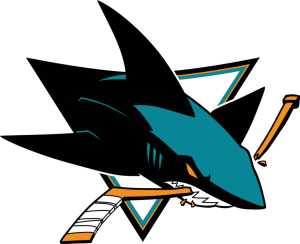 *23. C Ryan Poehling (St. Cloud State, NCHC | 6’2, 183):
*23. C Ryan Poehling (St. Cloud State, NCHC | 6’2, 183): The Sharks are an aging team with an average pool of prospects — six of their seven top scorers are over 30 and Logan Couture just turned 28. And if they make the Stanley Cup, this pick goes to Vancouver thanks to a condition in the Jannik Hansen trade. Still, the hunters are about to become the hunted, so a good start would be to build around a big, playmaking center like Poehling, a Minnesota kid who was the driving force behind Team USA’s near victory at the 2016 Hlinka. He didn’t get a ton of ice time as a college freshman, so the numbers (13 points in 35 games) are not an accurate reflection upon how skilled this kid is. Poehling can skate, dangle, dazzle and hit, drawing comparisons to Nashville’s Ryan Johansen. The Sharks love to draft Americans and should be quite familiar with Poehling, who plays in the same conference as 2016 second rounder Dylan Gambrell.
 *24. LHD Nicolas Hague (Mississauga, OHL | 6’6, 215):
*24. LHD Nicolas Hague (Mississauga, OHL | 6’6, 215): The Coyotes sure love the OHL — they’ve drafted an Ontario Leaguer in the first round in each of the last four drafts. I don’t see that trend changing thanks to the extra first they acquired from Minnesota in the Martin Hanzal trade, and a towering two-way defenseman like Hague is someone they could use. Like most young defensemen with size, Hague is somewhat of a project. But he has an excellent shot and takes the kind of calculated risks their arsenal of young puck distributors can incorporate into the offense. Hague is very active in the offensive zone, especially on the power play, while his one-on-one play improved as the year progressed.
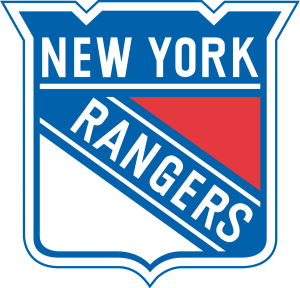 25. LW/C Scott Reedy (US U18, NTDP | 6’2, 204):
25. LW/C Scott Reedy (US U18, NTDP | 6’2, 204): The Rangers have one of the worst collection of non-NHL prospects in the league, but that’s more of a byproduct of maintaining a young, competitive roster at the NHL level rather than pointing to all the draft picks they trade. Nevertheless, they’ve done quite well with American-born players, specifically from the NTDP (J.T. Miller, Brady Skjei). Reedy should be no different, as he’s a powerful forward with exceptional vision and Miller-esque versatility to play either center or wing. He’s an outstanding puck handler and can create plays either off the rush or within tight quarters, and far too often has he victimized opponents with violent yet controlled zone entries. And while it’s true the organization is in desperate need of defensemen, they can’t let this talented a forward slip away.
 26. RHD Henri Jokiharju (Portland, WHL | 6’0, 180):
26. RHD Henri Jokiharju (Portland, WHL | 6’0, 180): Swift puck movers always seem to be in demand, so the Pens can do no wrong in drafting another Finnish-trained blueliner who is honing his skills in North America. Jokiharju is a power play quarterback who skates very well and connects with his stretch passes, but also shows he won’t back down from a challenge while battling in his own end. That doesn’t mean he’s physical — Jokiharju will never be confused with Brooks Orpik. But he’s a poised character who can handle a heavy forecheck and skate his way out of most jams. His shot is somewhat average but he has a quick release and isn’t afraid to throw it at the net.
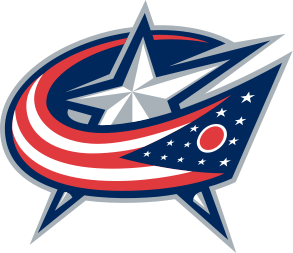 27. C Shane Bowers (Waterloo, USHL | 6’1, 183):
27. C Shane Bowers (Waterloo, USHL | 6’1, 183): A dynamic two-way player with a high IQ to compliment his many puck skills. Bowers can create or finish plays on the rush, and is very crafty and creative. He makes difficult plays look easy, especially in traffic while acting strong on the puck to handle harassment as he’s controlling in tight spaces. Committed to Boston University, Bowers looks to slip away into an open area with the hammer cocked, as he owns a lethal shot and can fire it with accuracy even if the puck is behind, in front of or in his skates. He’s deceptive on zone entries as he can use a speed burst for a cage rush, or slow it down and dump it off to a cutter or trailer
 28. C Nick Suzuki (Owen Sound, OHL | 5’11, 183):
28. C Nick Suzuki (Owen Sound, OHL | 5’11, 183): The Habs don’t have much to write home about when it comes to forward prospects, so any top-six skater at this point would be a welcomed addition. Suzuki is an outstanding offensive talent who is as low maintenance as you get — get him the puck and watch him make things happen. He’s one of the few players that can create multiple quality chances on a single shift, due in large part to his hustle and ability to steal pucks. Suzuki is a threat on both the power play and penalty kill, and while this kind of versatility is common for upper-tier draft eligibles, he is among the best of the best.
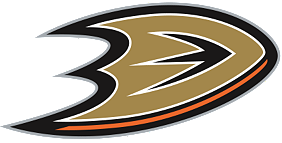 *29. LW Nikita Popugaev (Prince George, WHL | 6’6, 217):
*29. LW Nikita Popugaev (Prince George, WHL | 6’6, 217): This too is a conditional pick that could go to Dallas from the Patrick Eaves trade, but only if the Ducks make the Western Conference finals. Anaheim was able to make this sort of deal because of its deep prospect depth, but if retained, they can play around and take a gamble on a goal scorer like Popugaev — big and skilled but inconsistent and at times, disengaged. His strengths are obvious the second he hits the ice, as he possesses a massive wingspan and a long stride that allows him to keep the puck away from chasing opponents. And while his shot-release combo is deadly, he can also make plays and find the open man with accuracy.
 30. RW Grant Mismash (US U18, NTDP | 6’0, 186):
30. RW Grant Mismash (US U18, NTDP | 6’0, 186): A tough-as-nails goal scorer with the ability to find the open man, Mismash has been a key cog for the NTDP, including strong performances at each of the two U18 Five Nations Tournaments. He’s headed to North Dakota, but for now, keep an eye on him as he’s expected to be one of the better prospects at this year’s U18 Worlds in Slovakia. Mismash is a physical winger with an excellent shot who can be a load to handle in the offensive zone, and his ability to fire pucks off the pass, especially on the rush, is a rarity among 2017 draft prospects.
 *31. LHD Robin Salo (Vaasan Sport, Liiga | 6’1, 187):
*31. LHD Robin Salo (Vaasan Sport, Liiga | 6’1, 187): This is the pick the Blues acquired from Washington in the Kevin Shattenkirk deal, so having an extra first always gives them flexibility to take a bold stab. Enter Salo, a mature two-way rearguard who’s played well beyond his teenage years while patrolling a blue line in a professional league. He is mobile and can fire a heavy shot, but Salo is known more for his positioning and steady plays in all three zones. The Blues used to be a tough team to play against, and while Salo is neither a bone crusher or a speed burner, he’s ridiculously competent not only at defending his territory, but keeping the puck away from the danger areas. He’ll get most of his points from stretch passes and rebounds off of point blasts.
 2. C/W Casey Mittelstadt (Green Bay, USHL | 6’1, 201): Couple a second-half surge fueled by youngsters with an already deep pool of prospects, and the likelihood of Arizona trading down for proven players becomes all the more discernible. But I don’t see the Yotes passing up the chance to draft a phenomenal offensive player like Mittelstadt, a strong-skating playmaker with a deadly shot who can also play the wing. The future Minnesota Golden Gopher and winner of Minnesota’s 2017 Mr. Hockey Award dominated the USHL with an outstanding senior season with Eden Prairie in between.
2. C/W Casey Mittelstadt (Green Bay, USHL | 6’1, 201): Couple a second-half surge fueled by youngsters with an already deep pool of prospects, and the likelihood of Arizona trading down for proven players becomes all the more discernible. But I don’t see the Yotes passing up the chance to draft a phenomenal offensive player like Mittelstadt, a strong-skating playmaker with a deadly shot who can also play the wing. The future Minnesota Golden Gopher and winner of Minnesota’s 2017 Mr. Hockey Award dominated the USHL with an outstanding senior season with Eden Prairie in between. 3. Nico Hischier (Halifax, QMJHL | 6’1, 176): If Las Vegas wants its hockey team to mirror the city’s glitzy reputation, then drafting this skilled Swiss pivot with an exceptional hockey brain is a step in the right direction. Hischier finished the regular seasons as the top scoring rookie in Canadian Major Junior and possesses a complete skill set. He cooled off down the stretch after a torrid start, but his pre-draft resume includes star performances at numerous high-profile events, including the under-20 world junior championship and the CHL Top Prospects Game.
3. Nico Hischier (Halifax, QMJHL | 6’1, 176): If Las Vegas wants its hockey team to mirror the city’s glitzy reputation, then drafting this skilled Swiss pivot with an exceptional hockey brain is a step in the right direction. Hischier finished the regular seasons as the top scoring rookie in Canadian Major Junior and possesses a complete skill set. He cooled off down the stretch after a torrid start, but his pre-draft resume includes star performances at numerous high-profile events, including the under-20 world junior championship and the CHL Top Prospects Game. 4. RW Owen Tippett (Mississauga, OHL | 6’0, 200): Rugged goal scorer with a lethal shot who produced one of the best wire-to-wire seasons of any 2017 draft prospect. The Devils might be starving for offense at the NHL level, but GM Ray Shero has quietly collected a strong group of skilled prospects, including 2016 lottery pick Mike McLeod, who happens to center Tippett on the Steelheads’ top line. It’s not a stretch to say the Devils have seen plenty of Tippett, a power forward who can skate as well as he can fill the net, which he did to a tune of a team-best 44 goals, 76 points and 284 shots.
4. RW Owen Tippett (Mississauga, OHL | 6’0, 200): Rugged goal scorer with a lethal shot who produced one of the best wire-to-wire seasons of any 2017 draft prospect. The Devils might be starving for offense at the NHL level, but GM Ray Shero has quietly collected a strong group of skilled prospects, including 2016 lottery pick Mike McLeod, who happens to center Tippett on the Steelheads’ top line. It’s not a stretch to say the Devils have seen plenty of Tippett, a power forward who can skate as well as he can fill the net, which he did to a tune of a team-best 44 goals, 76 points and 284 shots. 5. LW Eeli Tolvanen (Sioux City, USHL | 5’10, 170): Dinging an elite talent for a nondescript performance at an event like the WJC rather than looking at the overall body of work is something I simply won’t do, so I’d like to thank Tolvanen for silencing the critics with an exceptional second half. A pure goal scorer with a blistering shot and quick release, the Finnish import leads the USHL in even-strength goals (24) and shots (230 in 48 games). His ability to elude opponents and finish off the rush is unmatched by any draft peer, and the trend of shrinking NHL defensemen will only make it easier for him to exploit his dynamic offensive skills. Tolvanen is committed to Boston College.
5. LW Eeli Tolvanen (Sioux City, USHL | 5’10, 170): Dinging an elite talent for a nondescript performance at an event like the WJC rather than looking at the overall body of work is something I simply won’t do, so I’d like to thank Tolvanen for silencing the critics with an exceptional second half. A pure goal scorer with a blistering shot and quick release, the Finnish import leads the USHL in even-strength goals (24) and shots (230 in 48 games). His ability to elude opponents and finish off the rush is unmatched by any draft peer, and the trend of shrinking NHL defensemen will only make it easier for him to exploit his dynamic offensive skills. Tolvanen is committed to Boston College. 8. RHD Tim Liljegren (Rogle, SHL | 6’0, 191): Liljegren may not have had the best season of the handful of notable 2017-eligible blueliners, but the potential to become an NHL game breaker hasn’t gone anywhere. The Jets should have a field day in a draft heavy on goalies and reliable two-way defenders, and while the parent club is only a piece or two from being a playoff team again, you rarely get a chance to come away with a draft pick who can skate and rifle the puck the way Liljegren can. This isn’t a make-or-break draft for Winnipeg, and its amateur scouting department recently has done quite well for themselves. I say roll the dice and draft the kid who’s already played against men in a professional league.
8. RHD Tim Liljegren (Rogle, SHL | 6’0, 191): Liljegren may not have had the best season of the handful of notable 2017-eligible blueliners, but the potential to become an NHL game breaker hasn’t gone anywhere. The Jets should have a field day in a draft heavy on goalies and reliable two-way defenders, and while the parent club is only a piece or two from being a playoff team again, you rarely get a chance to come away with a draft pick who can skate and rifle the puck the way Liljegren can. This isn’t a make-or-break draft for Winnipeg, and its amateur scouting department recently has done quite well for themselves. I say roll the dice and draft the kid who’s already played against men in a professional league. 9. LHD Jusso Valimaki (Tri-City, WHL | 6’2, 204): Tim Murray is feeling the heat after his Sabres will miss the playoffs for the third time in three full seasons as GM, so moving the pick for a veteran or prospect further along the development path is something to consider. Valimaki, however, is the only draft-eligible defensemen who has the brain, the legs and the physical muturity to take the shortest route from Draft Day to Opening Night. He owns a very hard shot and is a go-to guy for a variety of scenarios, especially when matched against top lines during late-game situations.
9. LHD Jusso Valimaki (Tri-City, WHL | 6’2, 204): Tim Murray is feeling the heat after his Sabres will miss the playoffs for the third time in three full seasons as GM, so moving the pick for a veteran or prospect further along the development path is something to consider. Valimaki, however, is the only draft-eligible defensemen who has the brain, the legs and the physical muturity to take the shortest route from Draft Day to Opening Night. He owns a very hard shot and is a go-to guy for a variety of scenarios, especially when matched against top lines during late-game situations. 11. LHD Erik Brannstrom (HV71 J20, Superelit | 5’10, 173): Ice general and elite breakout orchestrator with legitimate top pairing potential. Brannstrom is a very good skater with a deceptive change of pace who skates with his head up and manages to find the open man without giving away his intentions. Lots of teenage defensemen play with poise, but turning pressure situations into scoring chances is reserved for a select group of which Brannstrom sits at the very top. Nonstandard size would be a concern…if it were 1995. It’s kids like Brannstrom who you want managing the puck and strike with lethality while adhering to responsibilities in all three zones. Think peak Brian Campbell in terms of skating and puck distribution.
11. LHD Erik Brannstrom (HV71 J20, Superelit | 5’10, 173): Ice general and elite breakout orchestrator with legitimate top pairing potential. Brannstrom is a very good skater with a deceptive change of pace who skates with his head up and manages to find the open man without giving away his intentions. Lots of teenage defensemen play with poise, but turning pressure situations into scoring chances is reserved for a select group of which Brannstrom sits at the very top. Nonstandard size would be a concern…if it were 1995. It’s kids like Brannstrom who you want managing the puck and strike with lethality while adhering to responsibilities in all three zones. Think peak Brian Campbell in terms of skating and puck distribution. 14. RHD Cale Makar (Brooks, AJHL | 5’11, 180): The Bolts could use a little excitement from the back end, which is exactly why an electrifying dynamo like Makar makes sense. His dominance of a lesser league like the Alberta junior league was somewhat validated by his WJAC performance, but unless he plays for Canada at the men’s world championships in May, his pre-draft season leaves me wondering if his dizzying puck skills and explosive first step would be just as pronounced had he played in a tougher circuit. Then again, he should be a perfect fit for a team loaded with proven offensive talent.
14. RHD Cale Makar (Brooks, AJHL | 5’11, 180): The Bolts could use a little excitement from the back end, which is exactly why an electrifying dynamo like Makar makes sense. His dominance of a lesser league like the Alberta junior league was somewhat validated by his WJAC performance, but unless he plays for Canada at the men’s world championships in May, his pre-draft season leaves me wondering if his dizzying puck skills and explosive first step would be just as pronounced had he played in a tougher circuit. Then again, he should be a perfect fit for a team loaded with proven offensive talent. 15. LHD Urho Vaakanainen (JyP, Liiga | 6’0, 185): Garth Snow could use some consistency in any form, so drafting this smooth-skating Finn not only adds a little balance to his prospect depth, but allows Vaakanainen to grow alongside a host of gifted forwards within a system that promotes offense from the back end. He’s been a bottom-pairing defender for most of the season, but his upside puts him on a top pairing. He’s a crisp, accurate passer and boasts a hard, accurate shot.
15. LHD Urho Vaakanainen (JyP, Liiga | 6’0, 185): Garth Snow could use some consistency in any form, so drafting this smooth-skating Finn not only adds a little balance to his prospect depth, but allows Vaakanainen to grow alongside a host of gifted forwards within a system that promotes offense from the back end. He’s been a bottom-pairing defender for most of the season, but his upside puts him on a top pairing. He’s a crisp, accurate passer and boasts a hard, accurate shot.
